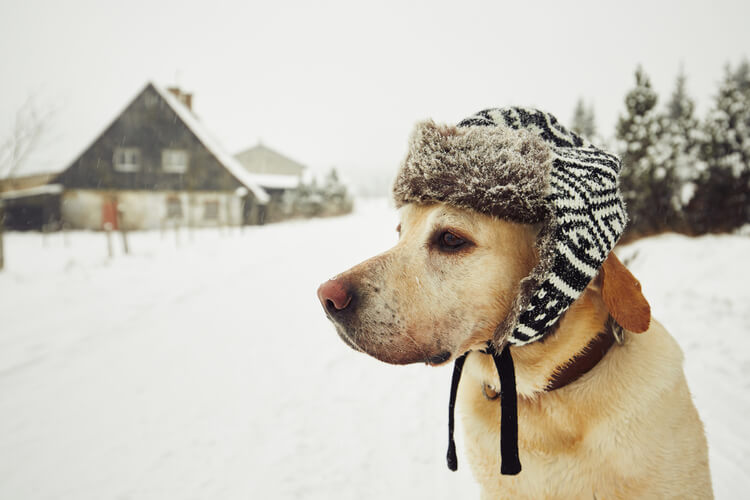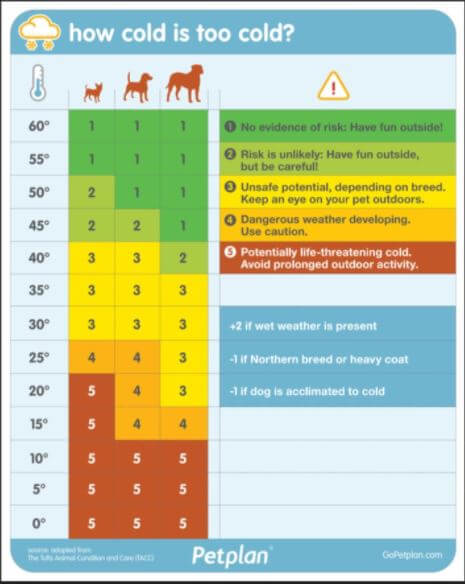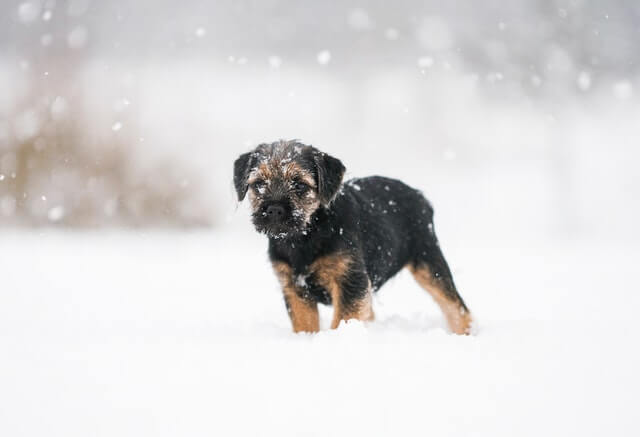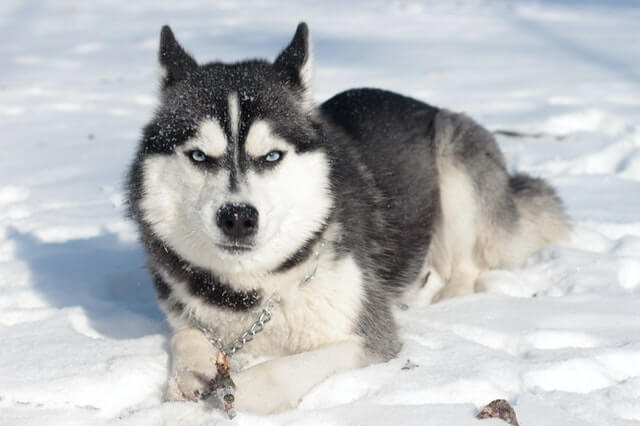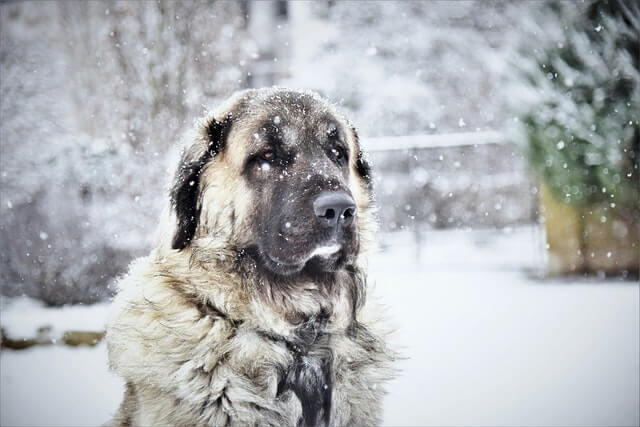Dogs tend to be hardier than people when it comes to their temperature tolerances and in general, many dogs can tolerate colder temperatures than their owners. But just because your dog can tolerate a certain temperature, doesn’t mean they should. Dog owners should be well aware of their dog’s limits.
Most dogs have a preference of preferring colder versus warmer temperatures, or vice versa. Some dogs prefer the cold and enjoy laying on cool tile floors and spending time in the snow and lower temperatures. Other dogs prefer warmth and staying inside cuddling on their cozy bed by the fireplace.
There are many different factors that play into what temperatures are appropriate for a particular dog, and ultimately, they are based on the individual and the specific environment.
- Age
- Size
- Breed differences
- Hair coat length
- Medical concerns
- Acclimation
It is important to know what temperatures and seasons your dog prefers and what is safe for him or her. It is also important to know when it is dangerous for your dog to be outside, whether it is too hot or too cold. In this article, we will focus on cold temperatures. Ultimately, if you are concerned about your dog and how he or she handles cold weather, you should seek professional veterinary advice from your veterinarian.
To start with, you might be asking the question, why would a dog even need to sleep outside in the first place? To answer, it is important to know that the author’s opinion is that no pet dog should be kept outside in cold temperatures. The only dogs that should be spending the majority of their time outdoors are working dogs and they should be well acclimated to their environment and trained to do a specific and important job. Any dog that spends a prolonged period of time outdoors must be provided with adequate food, water, and shelter out of the elements.
A good weather safety scale is an important guideline to use when determining safe temperatures for dogs.1 Keep in mind that this is used as a guideline and each dog should be considered on an individual basis. The scales should not be used to replace a veterinarian’s assessment. Animal Advocacy Illinois has developed a helpful graphic to put the somewhat complicated scale into an easy helpful tool. Essentially, the higher the number rating, the higher the risk. The lower the number rating, the lower the risk.
Image courtesy of Animal Advocacy Illinois
Based on this information. It is safe to assume that in most cases, dogs can safely tolerate temperatures at or above 45 degrees Fahrenheit. From there, Northern Breed dogs (those with thick heavy coats) can comfortably tolerate colder temperatures, while caution must be used for smaller and thin-coated breeds. Any dog that is young, old, thin, short-haired, or with a health condition, should not spend any prolonged time outside in the cold without a heat source readily available.
Let’s delve into some of the more specifics about dogs and cold temperatures.
Age
Young puppies (under 8 weeks) should be kept indoors and protected from extreme temperatures and the elements. Especially during the first few weeks of life, puppies cannot regulate their own body temperatures and should be kept especially warm.
Geriatric dogs should also be kept in a warm, protected, indoor space. Older dogs are more prone to health conditions and generally have decreased muscle and fat mass to defend them against severe temperatures. Older dogs also tend to have arthritis which can be exasperated in cold temperatures. Senior dogs also lose the ability to control their body temperature as they age.
Size
Image courtesy of Pexels
Small or toy sized dogs have less body mass and therefore lose body heat quickly. Smaller dogs are at a higher risk for hypothermia. Most small dogs will benefit from dog sweaters and coats in these lower temperatures. Having a small dog outside in lower than 30-degree temperatures should be limited to only short periods and well-monitored.
Medium sized dogs have similar recommendations as the smaller sized dogs but can generally withstand slightly colder temperatures better. Again, keep in mind the hair length differences, short-hair dogs can’t tolerate colder temperatures as well as the thicker haired breeds.
Large sized dogs can tolerate cooler temperatures than small and medium size dogs and are at a lower risk of hypothermia at temperatures above 30 degrees.
Breed Differences
Image courtesy of Pexels
There are huge variations in dog breeds, as most dog lovers know. Some were bred and are breeds built for cold temperatures. These breeds are known as the Northern breeds, Arctic breeds, or double coated breeds. Some examples include:
- Siberian Husky
- American Eskimo Dog
- Alaskan Malamute
- Newfoundland
- Great Pyrenees
- Samoyed
- Saint Bernard
- Bernese Mountain Dog
- Anatolian Shepherd
- Keeshond
- Chow Chow
- Norwegian Elkhound
Most of these breeds have thick, water resistant, double coats which are made especially for cold temperatures and provide extra insulation. Some of these breeds are bred and designed for working in cold climates and are excellent sled dogs or working farm dogs.
Hair Coat Length
As previously mentioned, dogs with thicker and longer fur have a better tolerance against cold than short-haired or thin-haired dogs.
Medical Concerns
Any dog with a specific medical concern (diabetes, kidney or liver disease, Cushing’s, thyroid disease, heart disease, arthritis, etc.), decreased immune system, infection, injury, or has had recent surgery should be kept out of the cold.
Acclimation
Dogs should never be placed suddenly from one environment to a new environment. This includes going from extreme humidity or wet conditions to dry, dry to humid, heat to cold, or cold to heat. Any dog should be allowed to acclimate and adjust slowly. Slow acclimation will help the dog’s haircoat adjust and help their bodies regulate. In general, partial acclimatization takes 10-20 days while full acclimatization takes around 60 days.2
Signs of Cold in Dogs
Image courtesy of Pexels
Some signs that your dog is too cold, in distress, or hypothermic include:
- Shivering
- Reluctance to move positions – often remaining in a curled-up position
- Listless, weak, or lethargic
- Ice on hair coat
- Trouble breathing
- Inaudible heartbeat
If you notice any of these signs in your dog, find veterinary assistance immediately and provide warm blankets or towels in the meantime. Your dog might be letting you know if they are too cold if they refuse to go outdoors at certain temperatures.
If your dog does like to spend extended time outside in the cold, or even sleep in the cold, make sure to provide a safe shelter which should be a small doghouse but big enough for the dog to turn around, raised off the ground, and with a thick layer of dry straw for nesting. You can also consider an additional outdoor dog bed. All dogs kept outside for any extended period should also be provided fresh unfrozen water and plenty of food. You may even want to keep a list of tips handy to remind you of these things.3
Obviously if your dog is having behavioral issues like the dog is peeing the bed, you shouldn’t force them outside. You can try other solutions – for instance if you have a larger dog you could try a waterproof large dog bed (for a bigger pup), elevated dog beds for large dogs, or even a large dog bed couch.
These specific factors discussed are important to consider when you think about letting your dog outside in the cold. Keep in mind, that there is not a lot of research or specific scientific data to provide exact guidelines for every dog or situation. It is best to pay close attention to your dog and always seek your veterinarian’s advice.
While it’s not a leading consideration when thinking about your dog sleeping outside, if you’re looking for more information on how to keep your pet healthy, we’ve created a series of resources regarding your puppy’s weight, including: our puppy weight calculator, our guide to the average dog weight, and a series of breed specific guides on a great dane’s average weight, a goldendoodle’s average weight, a golden retriever’s average weight, a chihuahua’s average weight, and a labrador’s average weight.
Article Sources
Pet News Daily uses only high-quality sources, including peer-reviewed studies, to support the facts within our articles. Read our editorial process to learn more about how we fact-check and keep our content accurate, reliable, and trustworthy.
- Patronek, GJ. Tufts Animal Care and Condition* (TACC) Scales for Assessing Body Conditions, Weather and Environmental Safety, and physical care in dogs. American Human Association. Published 1997. Accessed 5 Nov 2021.
- Jordan M, Bauer A E, Stella, J L, Croney C. Temperature Requirements for Dogs:Are they tailored to promote dog welfare? extension.purdue.edu. Published Oct 2016. Accessed 5 Nov 2021.
- Cold weather animal safety. avma.org. Accessed 5 Nov 2021.
